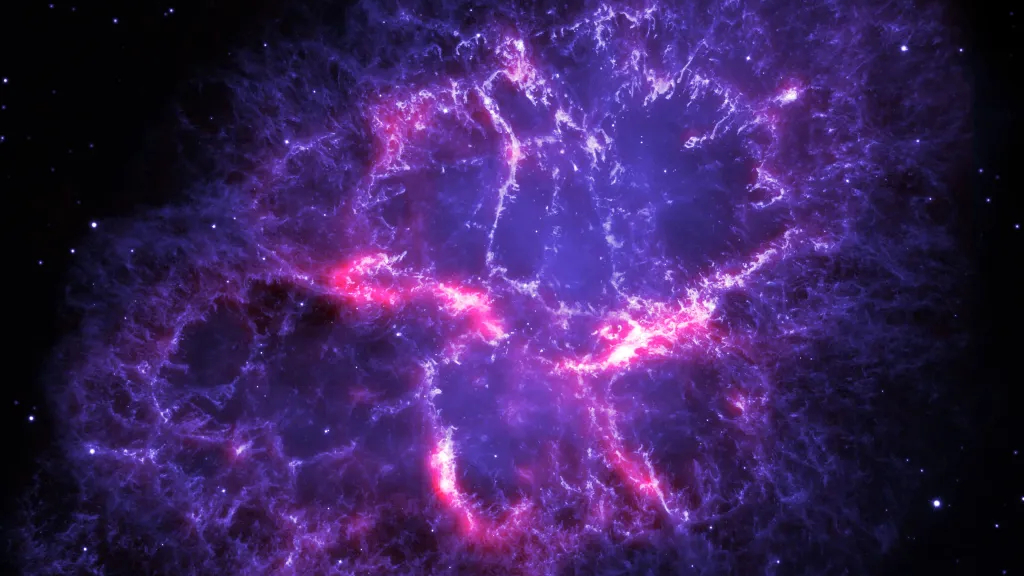Historical records from around the world describe a bright star appearing in the sky in the year 1054. Today, astronomers are confident that what our ancestors were seeing was, in truth, a star that had gone supernova.
But this wasn’t just any supernova. It was a supernova that would eventually lead to the formation of the Crab Nebula — a collage of interstellar gas and dust illuminated by the energy expelled during the death throes of a rapidly contracting nuclear furnace.The star in question would eventually become a pulsar — a rapidly rotating neutron star — sending pulses of electromagnetic radiation out into the ether. What’s more, this particular pulsar seems to emit a “zebra”‘ pattern in the high-frequency band of the electromagnetic spectrum, which is unlike any other pulsar researchers have observed thus far.
And now, an astronomer from the University of Kansas thinks he has solved the riddle.
“The emission, which resembles a lighthouse beam, repeatedly sweeps past Earth as the star rotates,” Mikhail Medvedev, lead author of the research, said in a statement. “We observe this as a pulsed emission, usually with one or two pulses per rotation. The specific pulsar I’m discussing is known as the Crab Pulsar, located in the center of the Crab Nebula 6,000 light-years away from us.”
Strangely enough, Medvedev describes the Crab Pulsar as having a zebra pattern because its emissions exhibit an unusual band spacing in the electromagnetic spectrum proportional to band frequencies. “It’s very bright, across practically all wave bands,” Medvedev said.
“This is the only object we know of that produces the zebra pattern, and it only appears in a single emission component from the Crab Pulsar. The main pulse is a broadband pulse, typical of most pulsars, with other broadband components common to neutron stars,” he added. “However, the high-frequency interpulse is unique, ranging between 5 and 30 gigahertz — frequencies similar to those in a microwave oven.”
Astronomers first stumbled upon the pattern in 2007, but explanations have been scant.
Medvedev, though, was able to use a novel method for gauging the density of the pulsar’s plasma — superheated charged particles that surround the dead star. He was then able to determine that the Crab Pulsar’s plasma…
Click Here to Read the Full Original Article at Space…

